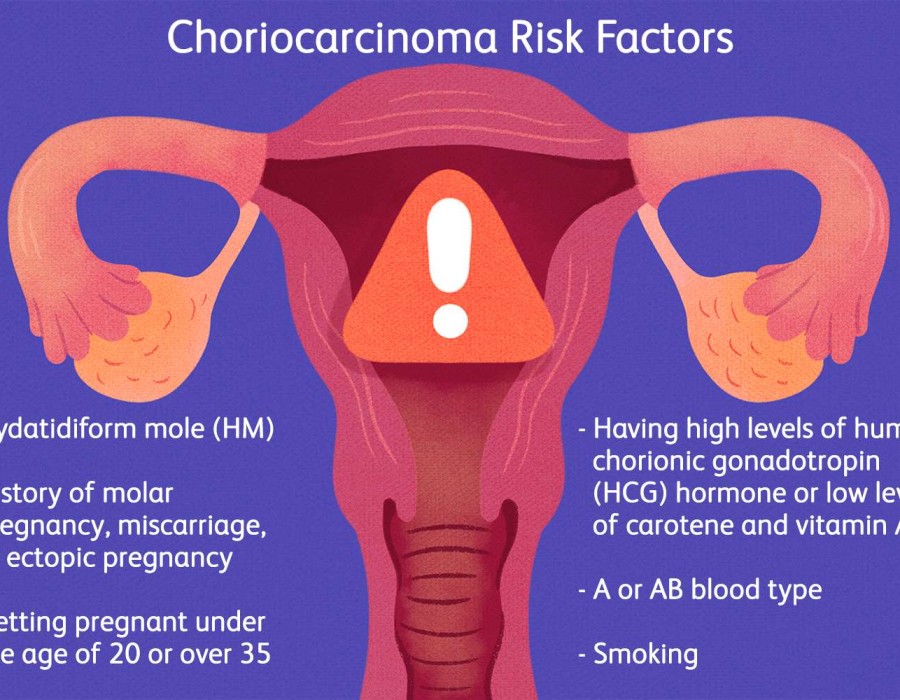Introduction:
Welcome to Dr. Chandrakanta’s Gynae-Oncology Center, your premier destination for advanced care in gynecologic cancers, including choriocarcinoma. Led by Dr. Chandrakanta, a renowned Gynae Oncologist in Jaipur, our center is dedicated to providing compassionate, personalized care to patients battling gynecologic malignancies. In this blog post, we will delve into the intricacies of choriocarcinoma treatment, exploring its causes, available options, and the hope that accompanies modern advancements in oncology.
Understanding Choriocarcinoma:

Choriocarcinoma is a rare but aggressive form of cancer that develops from trophoblastic cells, which are responsible for forming the placenta during pregnancy. While choriocarcinoma most commonly occurs in the uterus following a molar pregnancy (an abnormal pregnancy characterized by a nonviable fertilized egg), it can also arise from normal pregnancies, ectopic pregnancies, or even without a preceding pregnancy. This makes it crucial for women of childbearing age to remain vigilant about their reproductive health and seek prompt medical attention if they experience concerning symptoms.
Causes of Choriocarcinoma:
The exact causes of choriocarcinoma remain elusive, but several risk factors have been identified, including:
1. Molar Pregnancy: Choriocarcinoma often arises following a molar pregnancy, wherein abnormal growth of placental tissue occurs instead of a viable fetus.
2. Previous Gestational Trophoblastic Disease (GTD): Women with a history of GTD, which includes molar pregnancies, are at increased risk of developing choriocarcinoma.
3. Age: Choriocarcinoma primarily affects women of reproductive age, with peak incidence occurring between the ages of 20 and 40.
4. Ethnicity: Certain ethnic groups, such as women of Asian descent, have a higher prevalence of choriocarcinoma.
Treatment Options for Choriocarcinoma:
Choriocarcinoma treatment typically involves a multidisciplinary approach tailored to each patient’s unique circumstances. The primary goals of treatment are to eradicate the cancer, preserve fertility when possible, and minimize the risk of recurrence. Treatment modalities may include:
1. Chemotherapy: Chemotherapy is the cornerstone of choriocarcinoma treatment and is highly effective in killing cancer cells. Various chemotherapy regimens, such as EMA-CO (etoposide, methotrexate, actinomycin D, cyclophosphamide, and vincristine), are used either alone or in combination depending on the stage and severity of the disease.
2. Surgery: In cases where the tumor is confined to the uterus or has spread locally, surgical intervention may be recommended. This may involve a hysterectomy (removal of the uterus) or more conservative surgeries aimed at preserving fertility for women desiring future pregnancies.
3. Radiation Therapy: Radiation therapy may be used in conjunction with chemotherapy to target and destroy cancer cells, particularly in cases where the disease has spread to other organs or tissues.
4. Follow-up Care: After completing primary treatment, close monitoring and surveillance are essential to detect any signs of recurrence early. This typically involves regular imaging studies, blood tests, and clinical examinations.
Hope and Support:
While a diagnosis of choriocarcinoma can be overwhelming, it’s important for patients to remember that they are not alone in their journey. At Dr. Chandrakanta’s Gynae-Oncology Center, we offer comprehensive support services, including counseling, nutritional guidance, and access to support groups, to help patients navigate through diagnosis, treatment, and survivorship.
Conclusion:
Choriocarcinoma is a rare but treatable gynecologic cancer that requires prompt diagnosis and aggressive treatment. With advancements in medical science and a multidisciplinary approach to care, patients can find hope in the journey towards remission and recovery. If you or a loved one are facing choriocarcinoma, don’t hesitate to reach out to Dr. Chandrakanta’s Gynae-Oncology Center for expert care and compassionate support. Your journey to healing starts here.





Comments